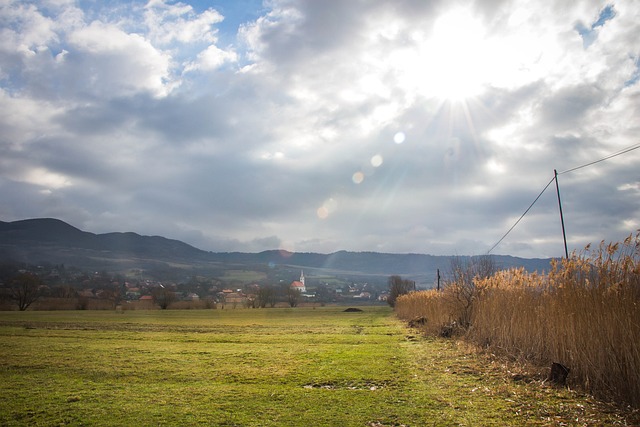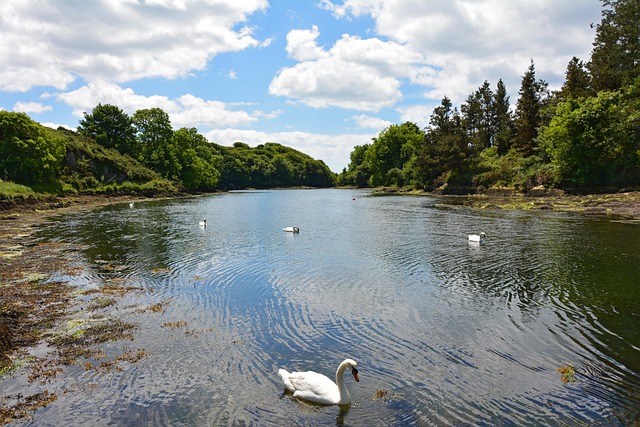In an interconnected world, understanding ecosystem relationships is vital for responsible real estate development. Forests, deserts, and mountains dynamically impact each other, influencing climates and biodiversity. Developers must consider environmental impacts like water runoff and habitat destruction to ensure sustainable practices. Preserving these ecosystems enhances property values and fosters resilience. Incorporating natural features in urban planning leads to more sustainable cities, enhancing property values and environmental consciousness. Today's real estate trends prioritize ecological resilience and green spaces, reflected in investments towards sustainable neighborhoods and architecturally integrated natural elements.
Forests, deserts, and mountains—each unique yet interconnected—form our planet’s diverse landscapes. This intricate web of ecosystems influences not only the natural world but also real estate trends. In today’s market, understanding these connections is paramount for investors and developers. From ecological resilience to tourism potential, diverse landscapes offer substantial benefits. This article explores how these interconnected environments shape property values and drive future developments in the real estate sector.
The Interconnected World: Ecosystems and Their Impact on Real Estate

In our increasingly interconnected world, understanding the intricate relationships between ecosystems is paramount, especially when it comes to real estate development. Forests, deserts, and mountains aren’t isolated entities but part of a complex web of life that influences each other in profound ways. For instance, forests play a vital role in regulating desert climates by releasing moisture into the atmosphere, while mountains act as barriers and corridors for various species, influencing migration patterns and biodiversity.
These ecosystems’ interdependence has significant implications for real estate. Developers must consider the potential impacts of construction on these natural systems, such as water runoff, habitat destruction, or altered climate patterns. Integrating sustainable practices and preserving these ecosystems can enhance the value of properties over time. By recognizing and respecting the delicate balance of nature, real estate professionals can contribute to a more resilient and harmonious coexistence between human habitats and the natural world.
Understanding the Benefits of Diverse Landscapes

Forests, deserts, and mountains, each with their unique characteristics, don’t just offer breathtaking vistas; they play a pivotal role in our planet’s health and local economies, especially in the realm of real estate. Diverse landscapes provide a multitude of benefits that often go unnoticed beyond their aesthetic appeal. For instance, forests act as carbon sinks, absorbing and storing significant amounts of atmospheric carbon dioxide, which is crucial for mitigating climate change effects. Deserts, despite their aridity, support unique ecosystems and offer protection against soil erosion while providing opportunities for sustainable tourism and renewable energy generation. Mountains, with their varied terrain, contribute to water regulation by capturing and releasing precipitation, ensuring downstream communities have a steady water supply.
This interconnectedness of landscapes means that real estate developments can embrace these natural features rather than seeing them as obstacles. Incorporating forests, deserts, or mountains into urban planning can lead to more sustainable and resilient cities, enhancing property values while promoting environmental consciousness among residents. Understanding the intricate relationship between these diverse landscapes is key to creating harmonious coexistence in both urban and rural settings, fostering a healthier planet for future generations.
Shaping the Future: How Interconnected Environments Drive Property Trends

In today’s world, real estate trends are no longer solely driven by location and amenities but also by environmental interconnectedness. Forests, deserts, and mountains—these diverse landscapes don’t just offer breathtaking views; they shape the future of property value and design. As climate change becomes an increasingly pressing issue, areas known for their resilience and ecological balance gain prominence. For instance, properties situated near forests or with access to green spaces often attract buyers seeking healthier lifestyles and a closer connection to nature. This shift is reflected in real estate investments, with developments in sustainable and eco-friendly neighborhoods experiencing significant growth.
Interconnected environments also influence architectural design. Modern builders are incorporating natural elements into their projects, blurring the lines between indoor and outdoor spaces. Homes that seamlessly integrate with their surrounding landscapes, whether it’s through organic materials or smart sustainability features, are becoming increasingly desirable. This trend not only enhances property values but also encourages a more harmonious relationship between human habitats and the natural world, ensuring a brighter future for both real estate markets and our planet.






